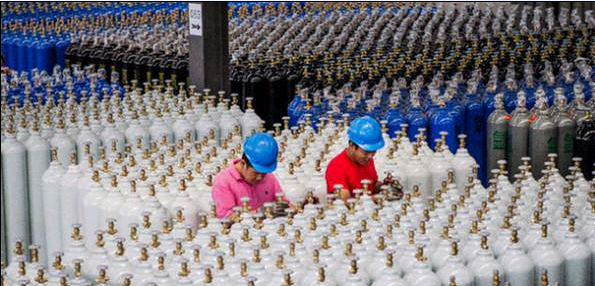All gases that can combine with oxygen (or other oxidizing gases) are called combustible gases. In the bottled gas, combustible gas accounts for about half, and hydrocarbon gas is the majority. Flammability is usually expressed in terms of the explosion range in air. For example, the explosion range of acetylene in air is 2.5~81% (volume), and the explosion range of hydrogen in air is 4.0~75%. Most mixtures of combustible gas and air within the explosion range are likely to burn and explode and emit large energy.

It is generally believed that the burning risk of bottled combustible gas is:
1、 The lower the lower explosive limit of the mixture of combustible gas and air, the more dangerous it is;
2、 The wider the explosion range of combustible gas mixed with air is, the more dangerous it is;
3、 The lower the natural point of combustible gas, the more dangerous it is;
4、 The lower the minimum ignition energy of combustible gas in the air is, the more dangerous it is;
5、 The greater the specific gravity of combustible gas, the more dangerous it is.
From the point of view of combustion, combustibles, oxides and excitation energy are three indispensable elements of combustion. For bottled combustible gas, the combustible is the gas itself and the oxide is air, which is difficult to isolate in general. Therefore, it is necessary to prevent combustible gas from forming combustion explosive mixture in the air. At the same time, it is also necessary to avoid air infiltration into the gas making device, pipeline and cylinder.